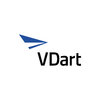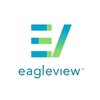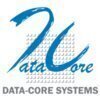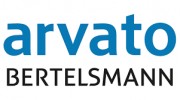
i
11:11 Systems
Filter interviews by
11:11 Systems Senior Devops Engineer Interview Questions, Process, and Tips
11:11 Systems Senior Devops Engineer Interview Experiences
1 interview found
I applied via Monster and was interviewed before Aug 2021. There were 2 interview rounds.
(4 Questions)
- Q1. What are Terraform life cycles ? and how do we use them ?
- Ans.
Terraform life cycles are a set of stages that define how resources are created, updated, and destroyed.
Terraform life cycles include create, read, update, and delete (CRUD) operations.
They are defined in the provider's resource configuration.
They can be used to control the order in which resources are created or updated.
Examples of life cycle hooks include pre-create, post-update, and pre-delete.
They can be used to pe...
- Q2. What are TF provisioners ? Describe their use cases
- Ans.
TF provisioners are used to execute scripts or commands on a resource after it is created.
Provisioners are used to configure resources after they are created
They can be used to install software, run scripts, or execute commands
Provisioners can be local or remote, depending on where the script or command is executed
Examples include installing packages on a newly created EC2 instance or running a script to configure a da...
- Q3. Azurecloud services that you worked on ? discuss their use cases in detail at your workplace ?
- Ans.
I have worked on Azure App Service, Azure Functions, and Azure DevOps.
Azure App Service was used for hosting web applications and APIs.
Azure Functions were used for serverless computing and event-driven scenarios.
Azure DevOps was used for continuous integration and deployment.
We used Azure DevOps to automate the deployment of our applications to Azure App Service and Azure Functions.
We also used Azure DevOps for source...
- Q4. What is ingress in Kubernetes and how does it helps us while we deploy an application in AKS ?
- Ans.
Ingress is a Kubernetes resource that manages external access to services in a cluster.
Ingress acts as a reverse proxy and routes traffic to the appropriate service based on the URL path or host.
It allows for multiple services to share a single IP address and port.
In AKS, we can use Ingress to expose our application to the internet or to other services within the cluster.
We can configure Ingress rules to specify which ...
(10 Questions)
- Q1. Discuss architecture of K8s in detail ?
- Ans.
K8s is a container orchestration platform that automates deployment, scaling, and management of containerized applications.
K8s architecture consists of a master node and worker nodes.
Master node manages the cluster state and schedules workloads on worker nodes.
Worker nodes run the containers and communicate with the master node.
K8s uses etcd for storing cluster state and API server for communication.
K8s also has variou...
- Q2. What is nodeaffinity and pod affinity in k8s?
- Ans.
Node affinity and pod affinity are Kubernetes features that allow you to control the scheduling of pods on nodes.
Node affinity is used to schedule pods on specific nodes based on labels or other node attributes.
Pod affinity is used to schedule pods on nodes that already have pods with specific labels or attributes.
Both features can be used to improve performance, reduce network latency, or ensure high availability.
Exam...
- Q3. Difference between pipeline variables and variable groups in Azure DevOps?
- Ans.
Pipeline variables are scoped to a single pipeline, while variable groups can be shared across multiple pipelines.
Pipeline variables are defined within a pipeline and can be used in tasks within that pipeline
Variable groups are defined at the project level and can be used across multiple pipelines
Variable groups can be linked to Azure Key Vault for secure storage of sensitive information
Pipeline variables can be overri...
- Q4. How to trigger a pipeline from specific version of Application code ?
- Ans.
Trigger pipeline from specific version of app code
Use version control system to track code changes
Configure pipeline to trigger on specific branch or tag
Pass version number as parameter to pipeline
Use scripting to automate version selection
Integrate with CI/CD tools for seamless deployment
- Q5. What are stages involved in release pipeline ? Explain the code
- Ans.
Release pipeline involves stages for deploying code changes to production.
Stages include build, test, deploy, and release.
Code is built and tested in a development environment before being deployed to staging.
Once tested in staging, code is released to production.
Continuous integration and delivery tools automate the pipeline.
Examples include Jenkins, GitLab CI/CD, and AWS CodePipeline.
- Q6. Any exposure to PCI / DSS compliance ?
- Ans.
Yes, I have exposure to PCI/DSS compliance.
I have experience implementing security controls to meet PCI/DSS requirements.
I have worked with teams to ensure compliance during audits.
I am familiar with the 12 requirements of PCI/DSS and how to implement them.
I have experience with tools such as vulnerability scanners and log management systems to ensure compliance.
I have worked with payment gateways and understand the im
- Q7. Default inbound/outbound NSG rules when we deploy VM with NSG? Explain them
- Ans.
Default inbound/outbound NSG rules when we deploy VM with NSG
By default, all inbound traffic is blocked except for traffic that is explicitly allowed by a rule
By default, all outbound traffic is allowed
Inbound rules are evaluated before outbound rules
Default rules can be modified or deleted as per requirement
- Q8. Monitoring tool experience? explain the kind of monitors you might have set for monitoring infra?
- Ans.
I have experience with various monitoring tools and can set up monitors for infrastructure health, performance, and security.
I have experience with tools like Nagios, Zabbix, and Prometheus.
For infrastructure health, I set up monitors for CPU usage, memory usage, disk space, and network connectivity.
For performance, I set up monitors for response time, throughput, and error rates.
For security, I set up monitors for una...
- Q9. How do we test connectivity to our app in AKS from Azure Front Door?
- Ans.
Test connectivity to AKS app from Azure Front Door
Create a test endpoint in AKS app
Add the endpoint to Front Door backend pool
Use Front Door probe feature to test endpoint connectivity
Check Front Door health probes for successful connectivity
- Q10. How do we ensure high availability of VM and AKS worker nodes ?
- Ans.
Ensure high availability of VM and AKS worker nodes
Use availability sets for VMs to distribute them across fault domains and update domains
Use node pools in AKS to distribute worker nodes across multiple availability zones
Implement auto-scaling to add or remove nodes based on demand
Monitor node health and set up alerts for failures
Regularly update and patch nodes to ensure security and stability
Interview Preparation Tips
- Terraform
- Kubernetes
- Azure cloud
- Datadog
- Monitoring
- log managment
- AKS
- JIRA
- service now
- Agile Methodology
- Azure automation Account
- Backpup and DR
Skills evaluated in this interview
Top trending discussions






Interview questions from similar companies

I applied via Recruitment Consultant and was interviewed in May 2021. There were 3 interview rounds.
Interview Questionnaire
4 Questions
- Q1. Much on kubernets
- Q2. How to setup infra through terraform in aws
- Ans.
To setup infra through terraform in AWS, follow these steps:
Create an AWS account and configure AWS CLI
Write Terraform code to define infrastructure resources
Initialize Terraform and create an execution plan
Apply the execution plan to create the infrastructure
Verify the infrastructure is created as expected
- Q3. Docker file to be created
- Ans.
Dockerfile for a Node.js application
Use a base image of Node.js
Copy package.json and install dependencies
Copy application code
Expose the port used by the application
Set the command to start the application
- Q4. Log files to be transferred to AWS s 3
- Ans.
Log files can be transferred to AWS S3 using various methods.
Use AWS CLI to transfer log files to S3
Use AWS SDK to transfer log files to S3
Use AWS Data Pipeline to transfer log files to S3
Use AWS Lambda to transfer log files to S3
Use third-party tools like Logstash or Fluentd to transfer log files to S3
Interview Preparation Tips
Skills evaluated in this interview

(2 Questions)
- Q1. Go Lang related questions
- Q2. System architecture

I applied via Naukri.com and was interviewed in Sep 2024. There were 5 interview rounds.
Leetcode easy level questions
(1 Question)
- Q1. Eliminate subsequent repetitions in a string
- Ans.
Remove subsequent repetitions in a string
Iterate through the string and compare each character with the next one
If they are the same, remove the repetition by shifting the characters to the left
Repeat this process until all repetitions are eliminated
(1 Question)
- Q1. Behavioral questions asked by Delivery Manager
(1 Question)
- Q1. Behavioral round and past experience
(2 Questions)
- Q1. Design a URL shortener
- Ans.
A URL shortener is a tool that takes a long URL and generates a shorter, more manageable link.
Generate a unique short code for each long URL
Store the mapping between short code and long URL in a database
Redirect users from short URL to original long URL when accessed
- Q2. Write unit test for a sevice class
- Ans.
Unit test for a service class
Create a test class for the service class
Mock any dependencies of the service class
Write test methods to cover different scenarios
Use assertions to verify the expected outcomes
Interview Preparation Tips
Skills evaluated in this interview

(1 Question)
- Q1. Data structure question asked
Interview Preparation Tips

I applied via Approached by Company and was interviewed in Aug 2022. There was 1 interview round.
(2 Questions)
- Q1. Tell about yourself and your biodata
- Q2. I have explained myself
Interview Preparation Tips


(1 Question)
- Q1. Skill related questions
(2 Questions)
- Q1. Management questions
- Q2. Depends on questions
(2 Questions)
- Q1. Previous experiences and reason for change
- Q2. Better opportunity and new challenges
Interview Preparation Tips

(2 Questions)
- Q1. What is CSS Sprite
- Ans.
CSS Sprite is a technique used to combine multiple images into a single image to reduce the number of server requests.
CSS Sprite helps in reducing loading time by reducing the number of HTTP requests.
It involves combining multiple images into one larger image and then using CSS to display only the portion of the image needed.
This technique is commonly used for icons, buttons, and other small images on websites.
By using...
- Q2. Object Oriented Programming
Skills evaluated in this interview

Senior Software Engineer Interview Questions & Answers
Saama Technologiesposted on 18 Jun 2024
(2 Questions)
- Q1. About the project. and asked what i did in project. how to create schema in pyspark. what is ADE. what are the difficulties i faced in project. what is spark submit command how we write sparksubmit command...
- Q2. No of occurrences of letter in a string.
- Ans.
Count occurrences of a letter in a string.
Iterate through each character in the string and count occurrences of the specified letter.
Use a hashmap to store the count of each letter.
Handle both uppercase and lowercase letters to ensure accurate counting.
Skills evaluated in this interview

Senior Software Engineer Interview Questions & Answers
Saama Technologiesposted on 8 Feb 2025
I appeared for an interview before Feb 2024.
(2 Questions)
- Q1. Form based JS questions. String questions in javascript
- Q2. React interview questions with some state management follow up questions.
Interview Preparation Tips
11:11 Systems Interview FAQs
Some of the top questions asked at the 11:11 Systems Senior Devops Engineer interview -
Tell us how to improve this page.
11:11 Systems Interviews By Designations
- 11:11 Systems Project Manager Interview Questions
- 11:11 Systems Storage Engineer Interview Questions
- 11:11 Systems Senior Engineer Interview Questions
- 11:11 Systems Specialist Interview Questions
- 11:11 Systems Relationship Manager Interview Questions
- 11:11 Systems Senior Devops Engineer Interview Questions
- 11:11 Systems Senior Software Engineer Interview Questions
- 11:11 Systems Process Associate Interview Questions
- Show more
Interview Questions for Popular Designations
- Devops Engineer Interview Questions
- AWS Devops Engineer Interview Questions
- Devops Interview Questions
- Cloud Devops Engineer Interview Questions
- Azure DevOps Engineer Interview Questions
- Devops Consultant Interview Questions
- DevOps Intern Interview Questions
- Lead DevOps Engineer Interview Questions
- Show more
Interview Questions from Similar Companies
|
System Engineer
45
salaries
| ₹4 L/yr - ₹10.3 L/yr |
|
Senior Engineer
42
salaries
| ₹7 L/yr - ₹17 L/yr |
|
Senior Systems Engineer
39
salaries
| ₹7.1 L/yr - ₹18 L/yr |
|
Backup Administrator
39
salaries
| ₹4 L/yr - ₹9 L/yr |
|
Specialist
38
salaries
| ₹10.3 L/yr - ₹28 L/yr |

Saama Technologies

DISYS

Data-Core Systems

Arvato
- Home >
- Interviews >
- 11:11 Systems Interview Questions >
- 11:11 Systems Senior Devops Engineer Interview Questions











